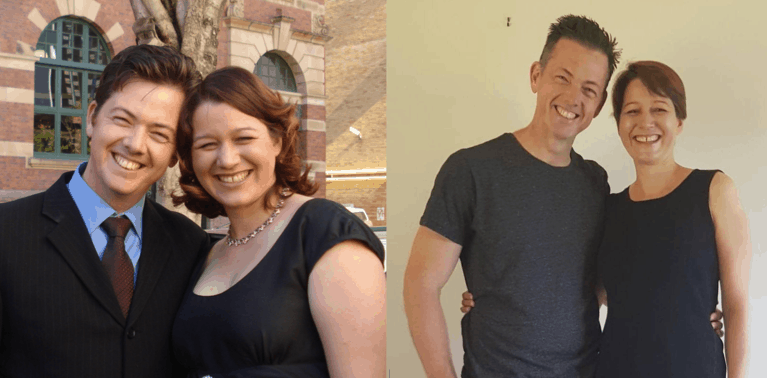Marty Kendall is an engineer who seeks to optimise nutrition using a data-driven approach.
Marty’s interest in nutrition began eighteen years ago to help his wife Monica better control her Type 1 Diabetes.
Since then, he has developed a systematised approach to nutrition tailored for a wide range of goals, contexts and preferences.
Over the past five years, Marty shared his research at OptimisingNutrition.com.
He has developed Nutrient Optimiser and Data-Driven Fasting to guide thousands of people on their journey towards nutritional optimisation.

Here Is My Story
Eighteen years ago, I married Monica, who happens to have Type 1 Diabetes. At the time, I didn’t understand what that meant or how it would change my life.
Like most newlyweds, shortly after tying the knot, we started to think about having kids. But we quickly realised that Monica needed to get her diabetes under control to avoid the long list of scary pregnancy complications with high blood sugars.

Monica has lived with Type 1 Diabetes since she was ten. But sadly, no endocrinologist, diabetes educator or dietician had been able to tell her what to eat or how to manage her insulin to enable her to control her blood sugars.
I didn’t know it at the time, but this was the start of my quest.
In 2012, I started to get more serious about nutrition after realising I was getting fat and risking becoming diabetic myself. Not only does my wife have Type 1 diabetes, but I have seen many of my family suffer from obesity and Type 2 Diabetes.
After trying a range of popular diets, I found I was getting fatter and sicker! So, I started researching and working to create a system to make better food choices for myself and my family.

As an engineer, I tend to understand my world with numbers and graphs. So I combined my skills, my passion and my fear to drive me to discover how I could use the data to cut through the noise.

As I shared my observations, people asked more questions. I continued to learn more as I worked to answer them by digging into the data that I have been fortunate to have access to.
1. INSULIN LOAD AND THE FOOD INSULIN INDEX
First, I analysed the Food Insulin Index data to help Monica make more informed food choices that would enable her to stabilise her blood sugar and insulin requirements. Once she could get off the blood sugar-insulin roller coaster, her weight, mood and energy levels improved dramatically!
2. NUTRIENT DENSITY
But I soon realised that the foods that required the least insulin in the short term (i.e. high fat, low protein foods) didn’t provide a significant amount of nutrients. So I combined the insulin index with nutrient density to identify the foods and meals that were nutritious while also keeping Monica’s blood sugars stable.
3. SATIETY
More number crunching enabled me to identify how macronutrients and micronutrients affect our appetite, cravings and how much we eat. Whilst we can try to restrict for a while, our appetite usually wins out in the end, that is, unless we choose foods the provide greater satiety.
The QUALITY of the food we choose to eat has a massive impact on food QUANTITY.
4. DATA-DRIVEN FASTING
I recently developed Data-Driven Fasting to address the problems I noticed people having when following popular fasting protocols. Rather than focusing on blood sugars after you eat to manage the symptoms of diabetes, it is much more valuable to manage your blood sugars BEFORE you eat if you want to lose fat and reverse insulin resistance and Type 2 Diabetes.
It has been a fantastic ride that continues to excite me! I am inspired by the hope that others will learn from my family’s journey and get the precise nutritional advice they need to enable them to reach and sustain their metabolic health & well-being goals.
It’s rewarding to see more people achieve extraordinary results as they apply these concepts in various ways to suit their unique preferences and goals.
Sites
Book
Social Media
Facebook Groups
- Optimising Nutrition Facebook Group
- Data-Driven Fasting Facebook Group
- Nutrient Optimiser Facebook Group
- Healthy Low Carb and Keto Recipes
